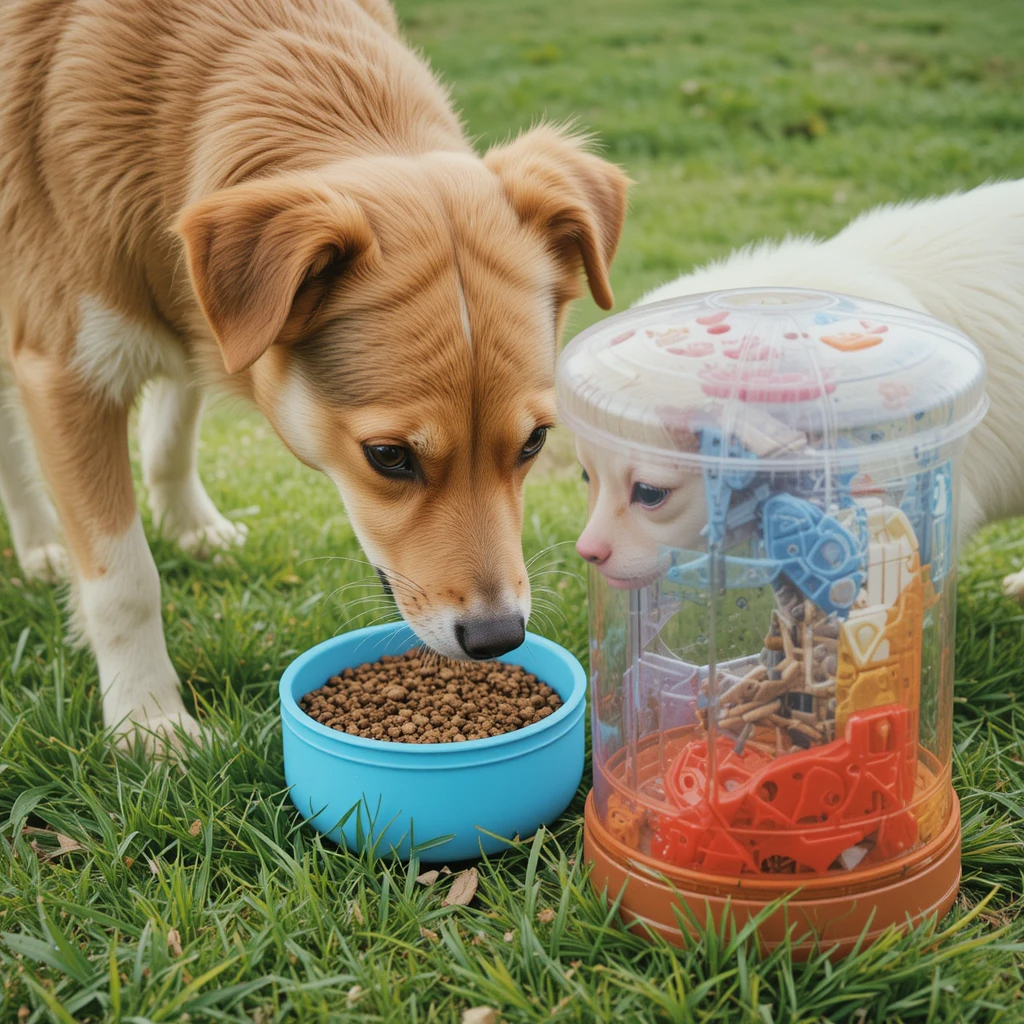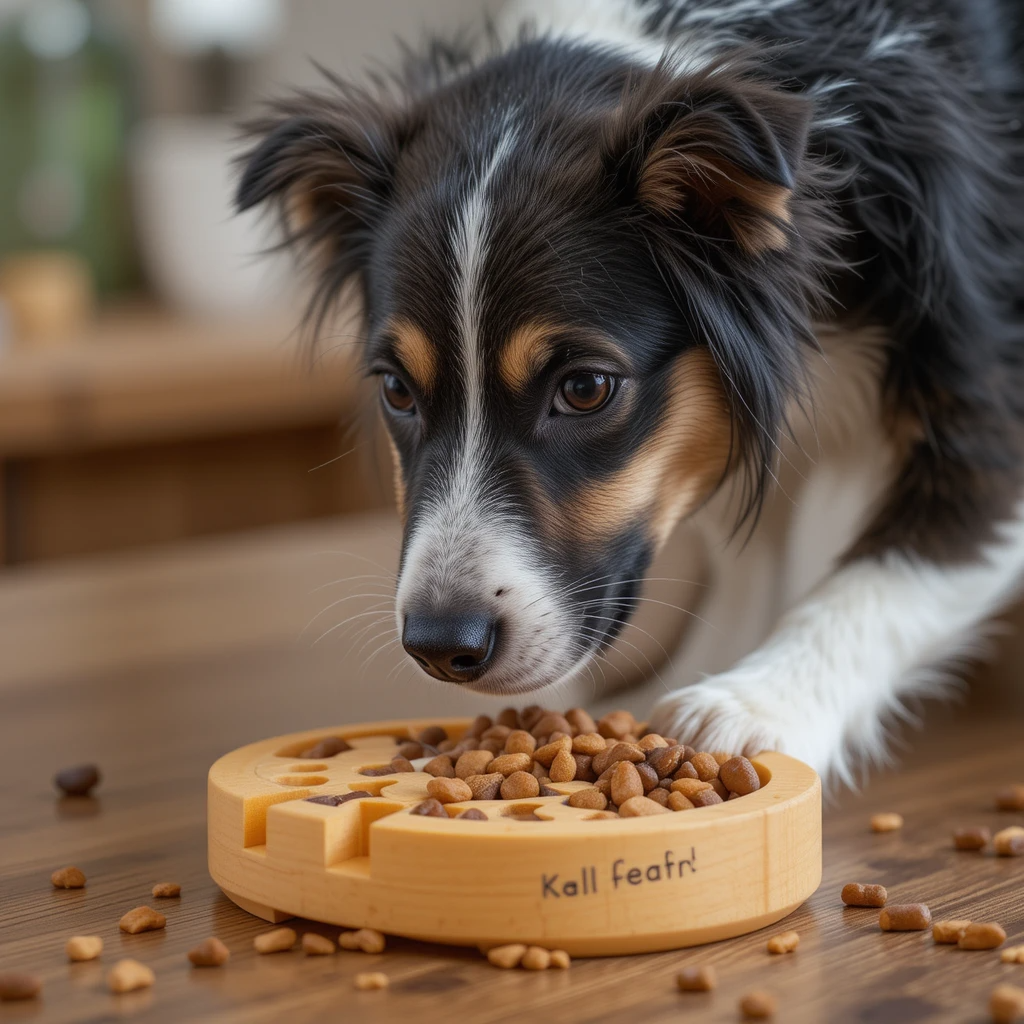When it comes to caring for our pets, we often focus on physical needs, like feeding and exercise. However, the mental stimulation is equally crucial, which is where puzzle feeders come into play. These unique tools are not just a trendy item; they serve as a fundamental aspect of your dog’s well-being. As an avid dog owner myself, I’ve found that using these feeders has significantly enriched my dog’s daily life. They provide mental stimulation while also contributing to your pet’s physical health. Unlike traditional bowls, puzzle feeders encourage dogs to work for their food, engaging both their brain and body in a positive way.
From a personal perspective, I’ve noticed a huge improvement in my dog’s behavior. The addition of a puzzle feeder into their routine has helped reduce boredom and behavioral issues, such as excessive barking or chewing. These devices challenge them to think and problem-solve, making mealtime an engaging experience. For any pet owner, investing in a puzzle feeder is a simple yet effective way to enhance your dog’s life, ensuring they stay active, both mentally and physically, throughout the day.
Table of Contents

Understanding the Benefits of Puzzle Feeders
Puzzle feeders are more than just an enjoyable activity for your dog; they provide important mental stimulation that helps keep your pet healthy and happy. Like humans, dogs need mental exercise to stay sharp, and these feeders turn mealtime into a brain game. By challenging your dog to think and solve problems in order to get their food, puzzle feeders prevent boredom and help reduce common behavioral issues. As a dog owner, I’ve found that these feeders are a great way to engage my dog both mentally and physically.
Another key benefit is the ability to slow down eating, which can help prevent digestive issues like bloating. Many dogs tend to gobble their food too quickly, but a puzzle feeder encourages slower, more mindful eating, which promotes better digestion and healthier eating habits. While puzzle feeders do not replace daily walks, they do provide physical exercise by encouraging dogs to use their paws and noses to interact with the feeder.
This gentle physical stimulation keeps your dog active even when you’re not around. Additionally, puzzle feeders can be an excellent way to reduce destructive behaviors caused by boredom, especially for dogs left alone during the day. They also offer training opportunities by teaching patience and persistence as your dog works through challenges to access their food.
Selecting the Right Puzzle Feeder
When selecting the right puzzle feeder for your dog, it’s essential to consider a few key factors like your dog’s size, breed, and eating habits. Not all feeders are the same, so you’ll want to pick one that suits your dog’s individual needs. There are different types of puzzle feeders available, ranging from simple treat-dispensing balls to more intricate contraptions. Personally, I’ve found that the more complex options work best for my dog as they provide a greater challenge and keep them engaged for longer periods.
Choosing the right puzzle feeder means picking one that strikes the right balance between difficulty and fun. A feeder that is too easy won’t engage your dog enough, while one that is too difficult could cause frustration. It’s important to find the right level of challenge that will keep your dog mentally stimulated while still being able to enjoy mealtime.
Integrating Puzzle Feeders with Dog Training
Puzzle feeders can be an excellent tool to incorporate into your dog’s training regime. They are not only fun but also highly effective in teaching essential traits like patience and focus. I’ve personally found that using puzzle feeders during training has helped my dog develop better concentration, especially when it comes to following commands or staying engaged during longer training sessions. By integrating these feeders into your routine, you can encourage your dog to think critically while also rewarding them with food, making training more enjoyable.
To get the most out of puzzle feeders, it’s important to start slowly, allowing your dog to familiarize itself with the feeder. As your dog becomes more adept at solving the puzzles, you can gradually increase the difficulty, which in turn enhances their focus and patience. Whether you’re working on basic obedience or more advanced training, puzzle feeders can be a fun, rewarding way to improve your dog’s behavior. For more ideas on how to use puzzle feeders effectively, you can check out our guide on best dog training products.

Enhancing Enrichment Activities
Incorporating puzzle feeders into your dog’s daily routine is a great way to take care of both their mind and body. These feeders not only provide mental stimulation but also encourage physical activity, making them a fun and engaging tool for enrichment activities. I’ve personally noticed how my dog’s behavior has improved after adding puzzle feeders to their routine, as they are no longer as restless or bored. These feeders keep your dog entertained and offer a perfect way to bond while also stimulating their brain.
If you’re looking for even more ways to keep your dog entertained, there are plenty of other activities for dogs you can try. Whether it’s interactive toys, walks, or training exercises, variety is key to maintaining your dog’s happiness and well-being. I recommend checking out our article about activities for dogs for more ideas on how to enhance your dog’s overall enrichment experience.
The Role of Puzzle Feeders in Preventing Overeating
Puzzle feeders are a great way to help prevent overeating in dogs. By making your dog work for their food, these feeders slow down mealtime and help reduce the chances of your dog eating too quickly. This slower pace not only prevents overeating but also aids in better digestion. From my own experience, I’ve seen how much more satisfied my dog is after using a puzzle feeder because they don’t rush through their meal, and it helps them feel fuller for longer.
In addition, many puzzle feeders are designed with portion control in mind. They hold a specific amount of food, making it easier for pet owners to manage how much their dog eats. This can be especially helpful for controlling portions and ensuring your dog doesn’t overeat, which can lead to serious health issues like obesity, diabetes, and joint stress.
The Impact of Puzzle Feeders on Canine Behavior
Puzzle feeders do more than just provide food; they can have a significant impact on your dog’s behavior. One of the main benefits I’ve noticed is how they help prevent destructive behaviors. When dogs are left without stimulation, they can become bored or anxious, which often leads to chewing, barking, or other unwanted behaviors. However, by keeping them mentally stimulated and occupied with a puzzle feeder, the chances of these issues decrease.
I’ve also seen an improvement in my dog’s focus and patience after using puzzle feeders. The challenge they present forces my dog to slow down and think, which enhances these key skills. Over time, this improved focus has helped in other training contexts, making it easier for my dog to follow commands and be more attentive. Puzzle feeders are a great tool for enhancing behavioral aspects while also giving your dog a fun and rewarding experience.
Puzzle Feeders in a Balanced Lifestyle
Puzzle feeders are a great tool for your dog, but they should be just one part of a balanced life. A balanced lifestyle for your dog includes regular exercise, good food, and time spent socializing. While puzzle feeders can help keep your dog mentally engaged, they aren’t meant to replace essential activities like daily walks or playtime. Instead, they serve as a supplementary tool to add an extra layer of enrichment, supporting your dog’s overall well-being.
From my experience, using puzzle feeders has been a fantastic way to complement my dog’s daily routine. They provide that extra mental stimulation after a good walk or play session, making sure my dog is getting the best of both physical and mental exercise. When used as part of a routine that includes exercise, playtime, and proper nutrition, puzzle feeders can be a simple but effective way to enhance your dog’s life.
Choosing the Right Puzzle Feeder for Your Dog
When selecting a puzzle feeder, it’s important to consider a few things based on your dog’s needs. Start by thinking about your dog’s size and breed. Larger breeds may need a more durable, sturdier feeder, while smaller dogs might prefer something with easier access. I’ve learned that the right fit can make all the difference in how engaged my dog stays during mealtime. Another factor to consider is your dog’s eating style—if your dog tends to eat quickly, a more complex puzzle feeder will help slow them down and improve their digestion.
Additionally, don’t forget about the ease of cleaning. I always choose feeders that are easy to wash and maintain because it’s important to keep your dog’s feeding tools hygienic. A feeder that’s simple to clean makes my routine much easier. Balancing these elements will help ensure you pick the best puzzle feeder to suit your dog’s habits and needs, enhancing both their mealtime experience and overall health tools.

Final Thoughts on Puzzle Feeders
Puzzle feeders for dogs come with a lot of benefits. They not only help provide mental stimulation but also encourage healthy eating habits, making mealtime more engaging. I’ve personally noticed that using puzzle feeders can significantly improve my dog’s eating pace and overall behavior. As part of a more comprehensive approach to pet care, these feeders can truly enhance the quality of life for your dog. They offer a fun and rewarding challenge that benefits both the mind and the body.
However, it’s important to always watch your dog closely when introducing a new feeder. Each dog is different, and you want to make sure the feeder suits their needs. If you’re worried about any eating or health issues, it’s always a good idea to talk to a vet to ensure you’re on the right track.

